Lichtenstein: A Retrospective
Roy Lichtenstein is undoubtedly one of the most conspicuous artists of the 20th century – with his instantly recognisable works an omnipresent staple of our visual culture, student hall walls and GCSE art sketchbooks.
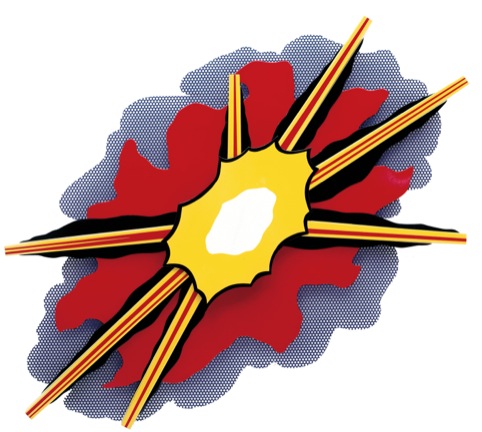
Source: © Estate of Roy Lichtenstein/DACS 2012
Wall Explosion II 1965
But while our eyes may have become desensitised to his most famous works, the new Tate Modern show, opening later this week, proves that its not all whaam!, bam, thank you vulnerable, heartbroken mam.
Past the doe-eyed blondes and square-jawed fighter pilots, presenting their comic-book narrative of outmoded gender roles, there’s an incredible body of work here.
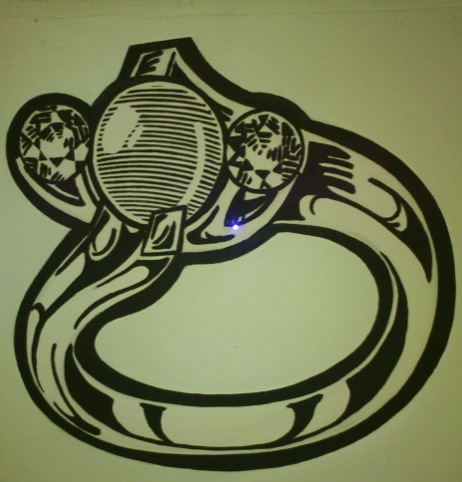
Presented thematically, the show provides and exhaustive look at Lichtenstein’s prolific and broad career.

Opening the show is the room of graphic brushstroke paintings, introducing the artist’s mode of knowing but loving parody. Here, he tackles the Abstract Expressionists, taking their highly kinetic, visceral style of mark-making and rendering bright, two-dimensional and distanced, turning it into something mechanical.
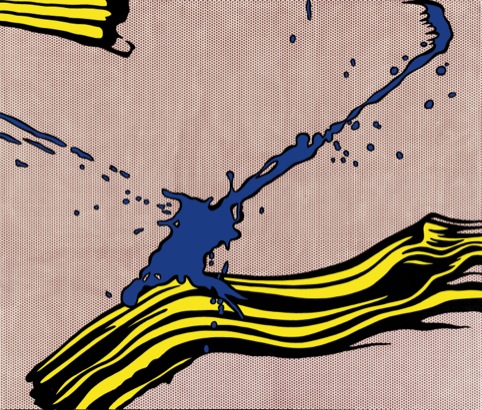
Source: © Estate of Roy Lichtenstein/DACS 2012
Brushstroke with Spatter 1966
‘Brushstrokes in a painting convey a sense of grand gesture’, said Lichtenstein. ‘But in my hands the brushstroke becomes the grand gesture.’
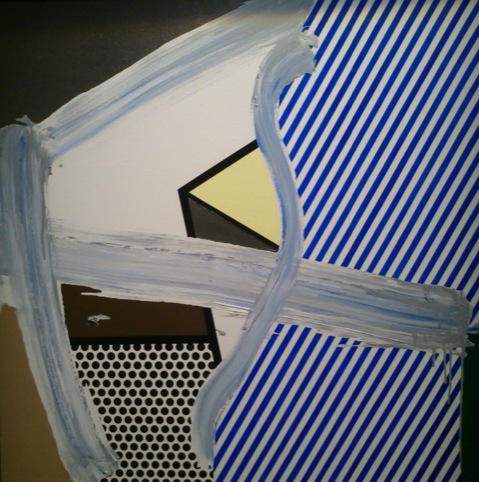
It’s a fitting primer for Lichtenstein’s carefully calculated examination of high art, popular culture and the world around him. Next, we see his early Pop works – taking pre-existing images, such as Mickey Mouse cartoons, and reproducing them in a deliberately unfaithful way. We see the pencil lines and an inaccurate mimicry of the original colours, conspiring to create images that aim to reconfigure cartoons and adverts with a pokerfaced delivery.
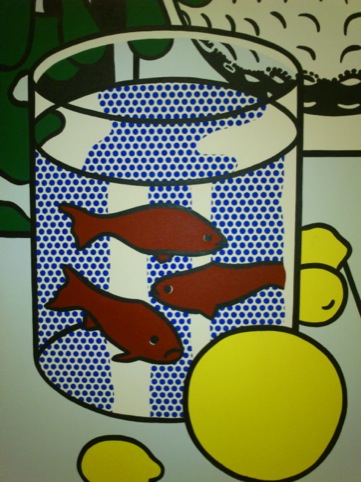
While Lichtenstein is undoubtedly most famous for his bright colours, the Black and White section shows his monochrome works to be equally powerful. Here, Lichtenstein takes images form the world of advertising – often copying adverts from newspapers and magazines – and transforming them into monochrome facsimiles in which they lose all their power to persuade.
There’s a lot of humour at play – a larger piece, Desk Calendar 1962, makes the day’s plans look comically banal – May, 21, ‘call Stan’, for instance, creates a narrative behind what’s essentially an image of some fairly mundane day-to-day goings on.
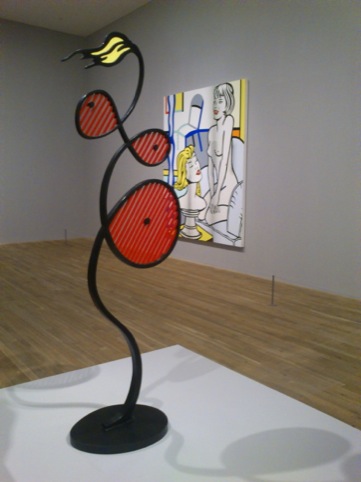
We love the Moderns section, showing less-well-known sculptural pieces dating from 1966-68, in which Lichtenstein apes the then-unfashionable Art Deco style of the 1920s.
The Art About Art room explicitly addresses Lichtenstein’s loving homages to the Masters, showing works engaging with a huge range of art movements, from Impressionism, to Futurism and Surrealism, as well as specific pieces. Lichtenstein describes 1963 work Femme d’Alger, his tribute to Picasso’s work, as transforming the original ‘into another high-art medium that pretends to be low art.’
He’s shown to be an artist obsessed with artists – a number of early 1970s works inspired by Matisse’s 1911 Pink Studio and Red Studio works depict artists’ studios, acting as a sort of inventory of his own oeuvre, with snapshots of his previous works peppering the scenes.

Self-awareness and satire are always at the fore: while the relatively unknown abstract series of ‘perfect’ and ‘imperfect’ paintings are to us one of the show’s strongest sections, Lichtenstein underscores their parodic values. ‘It seemed the most meaningless way to make an abstraction,’ he says of the series. ‘The nameless or generic painting you might find in the background of a sitcom, the abstraction hanging over the couch.’
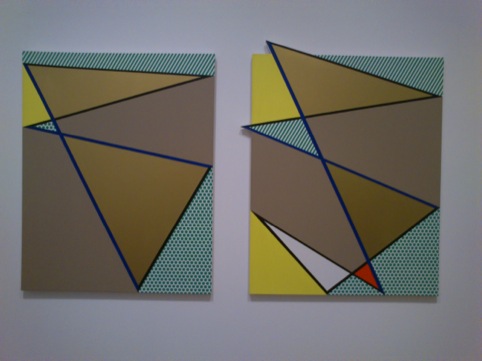
The exhibition ends with a fittingly calming display of mid-1990s Chinese Landscape works, quietly beautiful pieces that provide the perfect antidote to the drama and heartbreak and war Lichtenstein’s best known for.

Lichtenstein: A Retrospective runs from 21 February – 27 May 2013 at Tate Modern, Bankside, SE1
-
Post a comment




